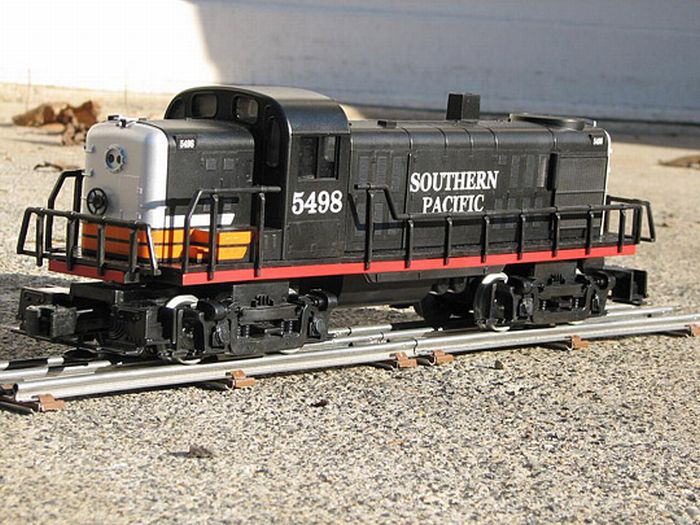|
|
Railway Modelling
|
At first, model railways were not to scale. Manufacturers and hobbyists soon arrived at de facto standards for interchangeability, such as gauge, but trains were only a rough approximation to the real thing (Normen Europäischer Modelleisenbahnen (NEM) and NMRA). Official scales for the gauges were drawn up but not at first rigidly followed and not necessarily correctly proportioned for the gauge chosen. O (zero) gauge trains, for instance, operate on track too widely spaced in the United States as the scale is accepted as 1:48 whereas in Britain O gauge uses a ratio of 43.5:1 or 7 mm/1 foot and the gauge is near to correct. British OO standards operate on track significantly too narrow. The 4 mm/1 foot scale on a 16.5 mm (0.650 in) gauge corresponds to a track gauge of 4 ft 1 1⁄2 in/1,257 mm, 7 inches / 178 millimetres undersized). 16.5 mm (0.650 in) gauge corresponds to 4 ft 8 1⁄2 in (1,435 mm) standard gauge in HO (half-O) 3.5 mm/1 foot or 1:87. This arose due to British locomotives and rolling stock being smaller than those found elsewhere, leading to an increase in scale to enable HO scale mechanisms to be used. Most commercial scales have standards that include wheel flanges that are too deep, wheel treads that are too wide, and rail tracks that are too large.
Later, modellers became dissatisfied with inaccuracies and developed standards in which everything is correctly scaled. These are used by modellers but have not spread to mass-production because the inaccuracies and overscale properties of the commercial scales ensure reliable operation and allow for shortcuts necessary for cost control. The finescale standards include the UK's P4, and the even finer S4, which uses track dimensions scaled from the prototype. This 4 mm:1 ft modelling uses wheels 2 mm (0.079 in) or less wide running on track with a gauge of 18.83 mm (0.741 in). Check-rail and wing-rail clearances are similarly accurate.
A compromise of P4 and OO is 'EM' which uses a gauge of 18.2 mm (0.717 in) with more generous tolerances than P4 for check clearances. It gives a better appearance than OO though pointwork is not as close to reality as P4. It suits many where time and improved appearance are important. There is a small following of finescale OO which uses the same 16.5mm gauge as OO, but with the finer scale wheels and smaller clearances as used with EM- it is essentially 'EM-minus-1.7mm.'
|
|









